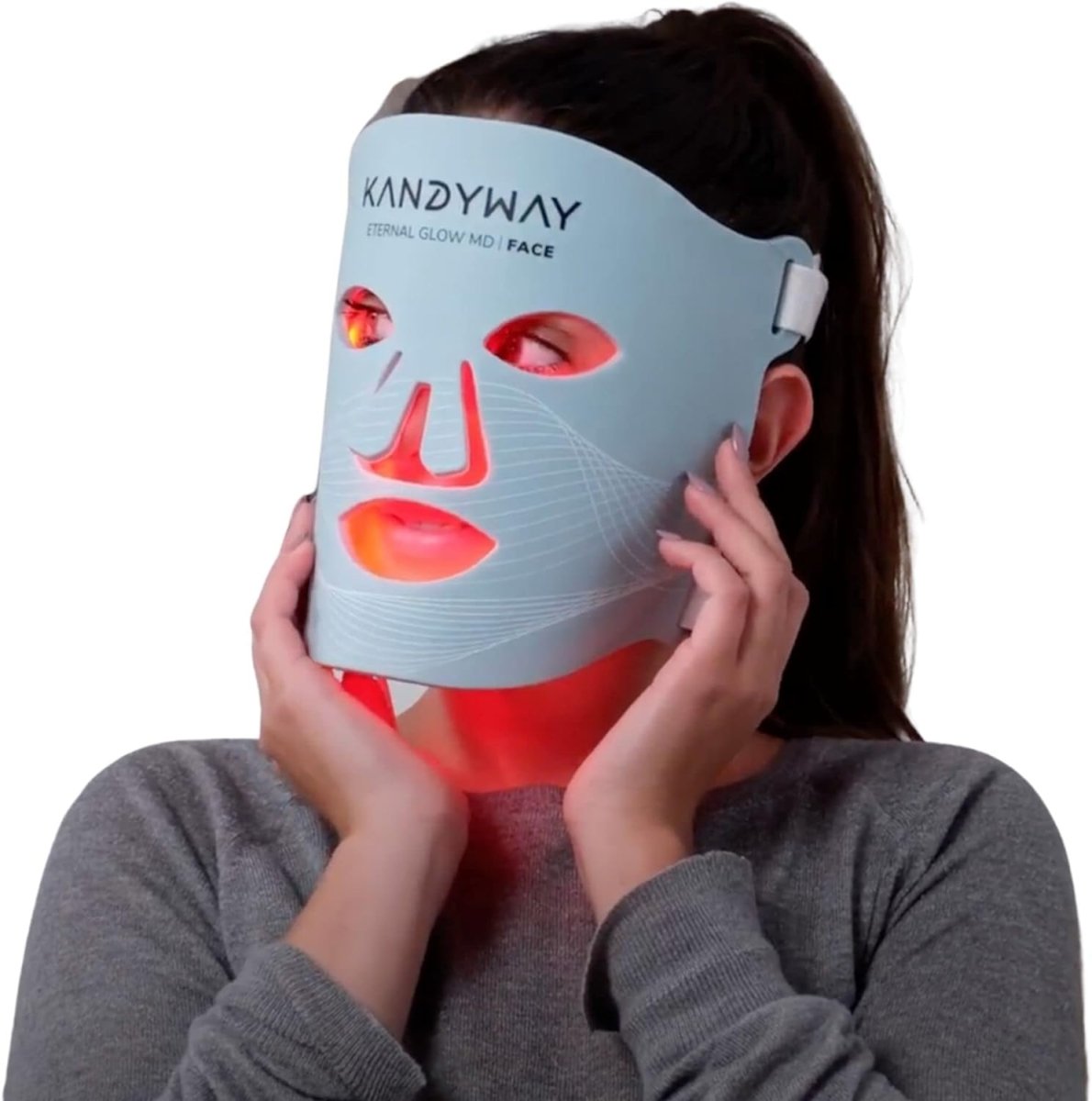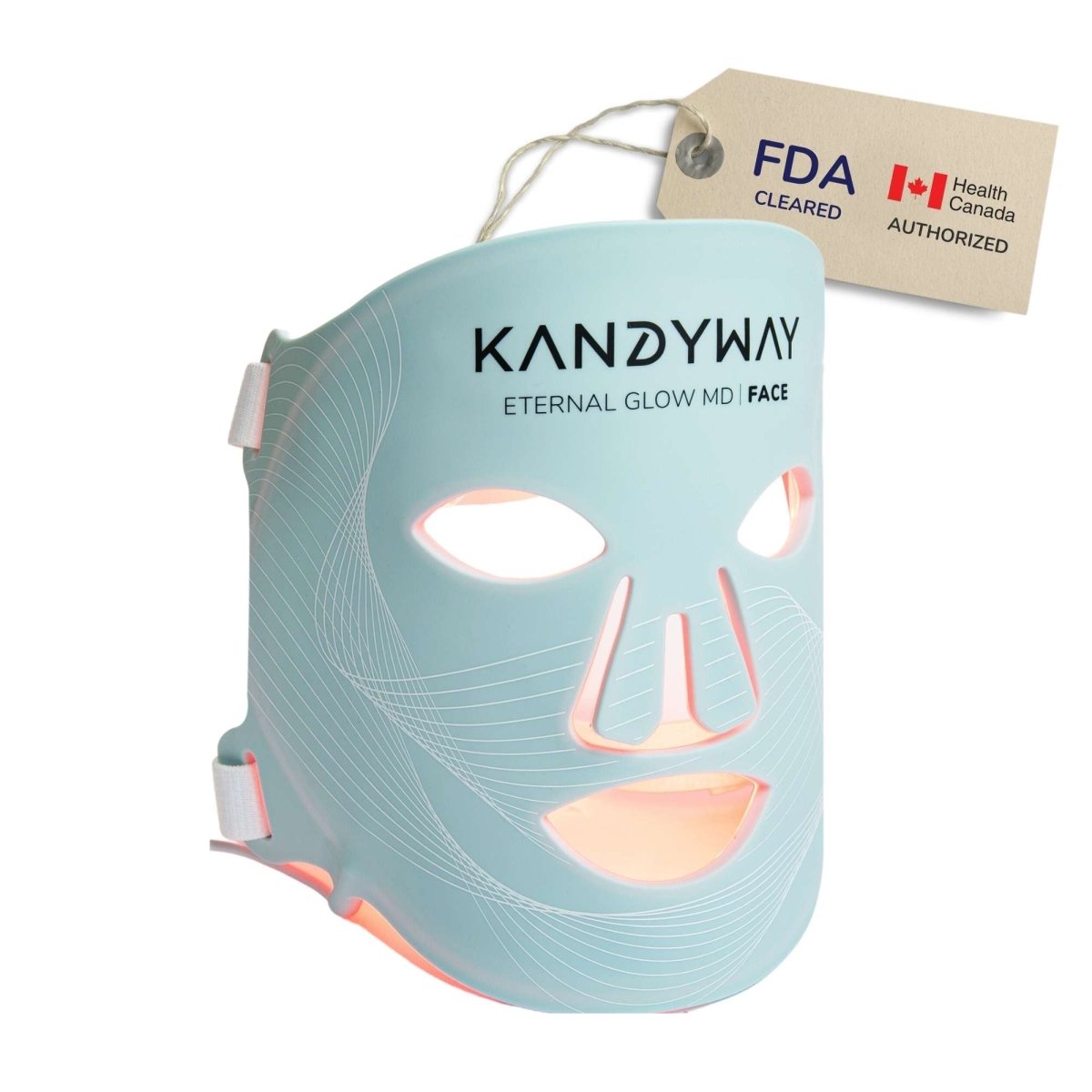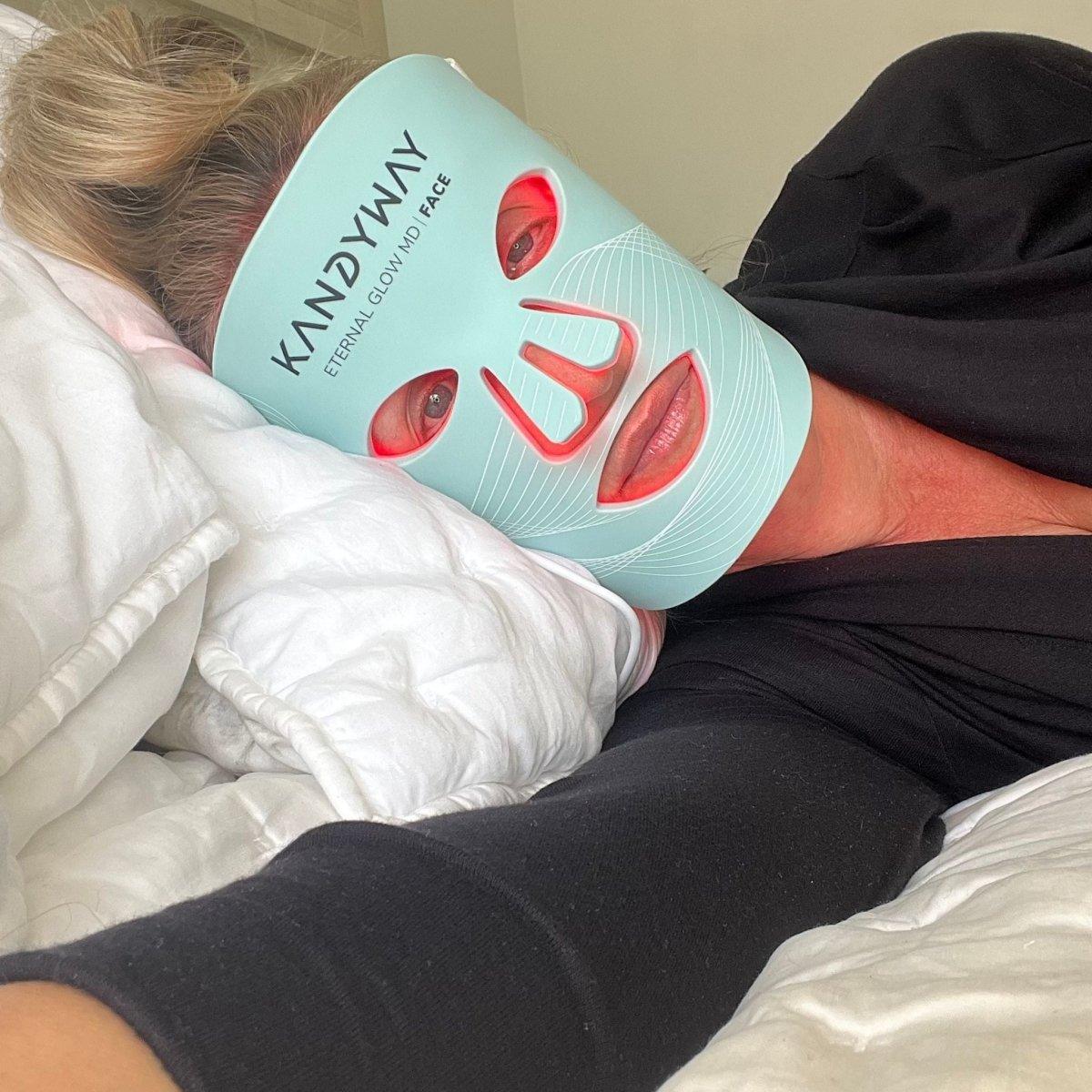The Real Science Behind Red Light Therapy Masks: What You Need to Know
Red light therapy has gained popularity across skincare, wellness, and biohacking communities, but with so much information online, it can be difficult to distinguish evidence-based insights from marketing hype. Recently, Michelle a PHD chemist from Lab Muffin Beauty Science released an excellent video exploring the real science behind red light masks — how they work, why they are effective, and what users should realistically expect.
Building on her explanations, this article will provide a clear, research-based overview of how red light therapy interacts with the skin and the key factors that determine its success. We also briefly introduce how carefully designed devices, like the Eternal Glow MD Mask by Kandyway, align with current scientific understanding.
How Red Light Therapy Works: A Scientific Overview
At its core, red light therapy uses specific wavelengths of light to stimulate biological processes within the skin — a phenomenon known as photobiomodulation.
When red or near-infrared light reaches the skin, it is absorbed primarily by mitochondria, the energy centers of our cells. This absorption enhances the mitochondria's ability to produce cellular energy, which can:
- Accelerate skin healing and repair
- Stimulate collagen and elastin production
- Reduce inflammation
- Support overall skin rejuvenation
This cellular boost does not introduce foreign substances into the body; it simply enhances the skin’s natural renewal mechanisms.
Key Factors: Wavelength and Dose
Wavelength Selection
Research highlights that certain wavelengths are particularly beneficial for skin health. The most commonly studied include:
- 633 nm: Associated with collagen production and skin texture improvements.
- 830 nm (Near-Infrared): Reaches deeper tissues and may reduce inflammation and enhance recovery.
Effective red light therapy devices focus on delivering these wavelengths to maximize benefits while minimizing unnecessary light exposure.
Importance of Dose
Success with red light therapy also depends on delivering the appropriate "dose" — the right balance of light intensity and exposure time. This is often measured by irradiance (light power per area) and treatment duration.
Scientific studies suggest that an irradiance between 30–40mW/cm² supports optimal therapeutic effects for skin rejuvenation without risk of overstimulation. Devices like the Kandyway Eternal Glow MD Mask are calibrated around 35mW/cm², aligning with evidence-based dosing standards.
Understanding the Masks vs Panels Discussion
There is ongoing discussion within the skincare and wellness communities about whether masks or larger light panels are more effective.
Panels typically offer higher overall output, which may suit broader body treatments. However, masks are often better suited for facial treatments because they:
- Maintain close, even contact with the skin
- Provide consistent dosing across curved facial areas
- Offer convenience, encouraging more regular use
Consistency plays a significant role in achieving visible improvements, meaning the best device is often the one that comfortably fits into a user’s lifestyle.
Advanced Science Behind Red Light Therapy
Cellular Mechanisms
Red light impacts cellular metabolism by freeing nitric oxide molecules that otherwise block mitochondrial activity. This unblocking allows for improved oxygen utilization and greater energy production within cells, promoting faster repair and improved skin structure.
Variability Among Cells
Not all skin cells react identically to red light. While mitochondria are the primary light absorbers, other cellular components may also interact with light, contributing to broader therapeutic effects across different skin types and conditions.
Finding the Optimal Dose
Red light therapy follows a biphasic dose response, meaning:
- Too little light results in minimal or no effect.
- A moderate, controlled dose promotes maximum benefits.
- Excessive light exposure can reduce effectiveness or cause irritation.
Maintaining treatments within the therapeutic window — such as using an irradiance around 35mW/cm² for 10-minute sessions — helps optimize outcomes.
The Role of Device Fit
Close contact with the skin is essential. Light energy can easily reflect away if the device sits too far from the skin surface. Masks designed for ergonomic facial fit maximize energy absorption, improving the overall effectiveness of each session.
Consistency and Long-Term Results
Although dose and wavelength are critical, consistent use over time is equally important. Whether choosing a mask or a panel, a user’s ability to regularly integrate treatments into their routine greatly influences the results they achieve.
Considerations When Choosing a Red Light Therapy Device
When selecting a red light therapy device for skin health, it’s important to consider:
- Validated therapeutic wavelengths (e.g., 633 nm, 830 nm)
- Appropriate irradiance (around 30–40mW/cm²)
- Consistent, even light distribution
- Comfort and ease of use to promote regular treatments
- Quality construction and safety certifications
Devices that align with these scientific benchmarks offer the best chance for meaningful, visible improvements over time.
Acknowledgement
This article was inspired by the scientific research shared by Michelle a PHD Chemist from Lab Muffin Beauty Science. You can view her full original video here. We appreciate her commitment to providing accessible, evidence-based information about skincare and wellness technologies. Please follow her channel as we believe she is cutting through the BS in the influencer world without all the marketing fluff.
Conclusion
Red light therapy is a promising tool for supporting healthier, more resilient skin. When guided by scientific evidence — including appropriate wavelengths, controlled dosing, and consistent application — it can offer real, noticeable benefits.
Choosing a well-engineered device that fits comfortably into your lifestyle is crucial for success. Understanding the mechanisms behind red light therapy empowers users to make informed decisions and maximize their skincare journey with confidence.
To learn more about light-based skincare technologies and explore red light therapy solutions, visit Kandyway.










